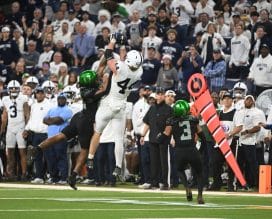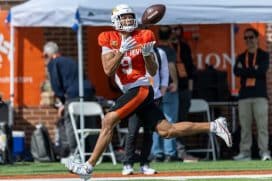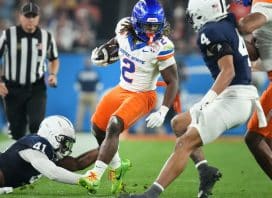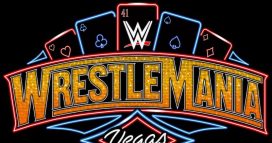Writer: Matt Albertson
Race and baseball in Philadelphia, part 1: Octavius Catto and the Pythian Base Ball Club
Baseball is reflective of American society; from ideas of masculinity in the 1860's-1870's to baseball as a labor struggle during the 1880's and up to the present day. Baseball has always been, and probably will remain, a microcosm of American society. But arguably the largest societal issue to impact the game was race. In recognition of Black History Month, I'll provide an overview of race as it relates to Philadelphia baseball history by covering a few key figures and events. Today's installment will focus on Octavius Catto and the Pythian Club of Philadelphia.
Baseball historians agree today that baseball is an evolutionary game, not a game devised by Abner Doubleday in Cooperstown, New York in 1839. The first true organized club in Philadelphia – comprised of members who paid dues and attended meetings – was the Olympic Base Ball Club of Philadelphia, formally organized in 1831. The Olympics played a crucial role in baseball's social evolution as they were the first all-white club to accept a challenge to play an all-black team, the Philadelphia Pythians and club founder Octavius Catto.
Catto was born in South Carolina in 1839 and moved to Philadelphia with his parents in 1850. His parents were affluent and sought the same for their son. Catto graduated valedictorian from the Institute for Colored Youth (now Cheyney University) in 1858, where he played cricket and town ball (a bat and ball game similar to baseball). According to historian John Shiffert, he was among Philadelphia's black elite during and after the Civil War and founded "the Banneker Literary Institute, the Equal Rights League, and in 1866, the Philadelphia Pythian Club…[and]…was a member of the Franklin Institute, the Philadelphia Library Company, the Fourth Ward Black Political Club, the Pennsylvania State Equal Rights League, the Social, Cultural, and Statistical Association of Colored People of Philadelphia, and the Union League." In short, Octavius Catto was a renaissance man who sought equality for African-Americans throughout the nation. He used baseball as an engine to drive society toward integration, because until the Civil War, baseball was a game reserved for upper and middle class white men.
The Pythians were among the more talented amateur teams in Philadelphia and routinely played other amateur black clubs in the area. The club applied for membership in the all-white Pennsylvania Association of Amateur Base Ball Players and National Association of Base Ball Players (NABBP) in 1867; both organizations refused their membership. Shiffert states that the refusal was the first drawing of a color line in baseball. Catto and his Pythians continued their assault on Jim Crow in baseball when in 1869 the Olympics accepted a challenge to play ball. The game was held on September 3, 1869 at the Olympics home field at 25th and Jefferson streets in Philadelphia. The three hour contest ended with the Olympics prevailing 44-23. This was the first documented game played between two all-white and all-black teams. A rematch was scheduled in October but no record of a game exists. Baseball's first color barrier was broken.
Also read: Smells like team spirit-The Phillies uniforms blues
Catto and the Pythians used baseball as a way to publicly push for racial equality. They understood that society wouldn't take the cause of racial equality seriously if they didn't play a white club. While they shared the field with the Olympics as fellow ballists (players), their loss to that club didn't completely erase the inequality issue. They needed a victory to prove to the public that black ballists were as good as white ballists. Finally, on October 16, 1869 – four years after Lee surrendered to Grant, ending the American Civil War – the Pythians defeated the Philadelphia City Items 27-17. A form of equality was reached on the baseball diamond.
Catto's civil rights efforts involved more than baseball, but the game's immense popularity helped to drive the civil rights movement. Catto continued his push for black suffrage in America and his dream was realized in 1871. Unfortunately for Catto, racial tensions rose with the passage of the 15th Amendment. On Election Day 1871, a race riot erupted on South Street over black suffrage and Catto was gunned down at the age of 32.
This brief overview barely scratches the surface of Catto and his fight for racial equality. But it shows that Catto used baseball as an engine to accomplish something larger than increasing the wealth of players and owners. His actions were not in vein. The Pythians continued to play well after Catto's death and were even a charter member of the short-lived National Colored Base Ball League (NCBBL) in 1887. This league was the first attempt at organizing an all-black baseball league – indeed a precursor to the infamous negro leagues of the 20th century. Interest in Catto and the Pythians has revived in recent years thanks to the Philadelphia Inquirer's Daniel R. Biddle and Murray Dubin and renewed interest in baseball's origins. Check out the below works for more detailed information on Catto and the Pythian Base Ball Club.
Next: Philadelphia's First Black Major Leaguers
—
Information for this article was obtained from the New York Times (via Newspapers.com), Philadelphia Inquirer (via Philly.com), Philadelphia Magazine (via PhillyMag.com), the SABR Games Project (via SABR.org), Daniel R. Biddle and Murray Dubin "Tasting Freedom: Octavius Catto and the Battle for Equality in Civil War America," John Shiffert "Base Ball in Philadelphia: A History of the Early Game, 1831-1900," John Thorn, "Baseball in the Garden of Eden: The Secret History of the Early Game," and Christopher Threston "The Integration of Baseball in Philadelphia".
The top image in this article comes courtesy of Getty Images
Matt Alberston (@mdalbert88) is a historical columnist on Philliedelphia.com.





